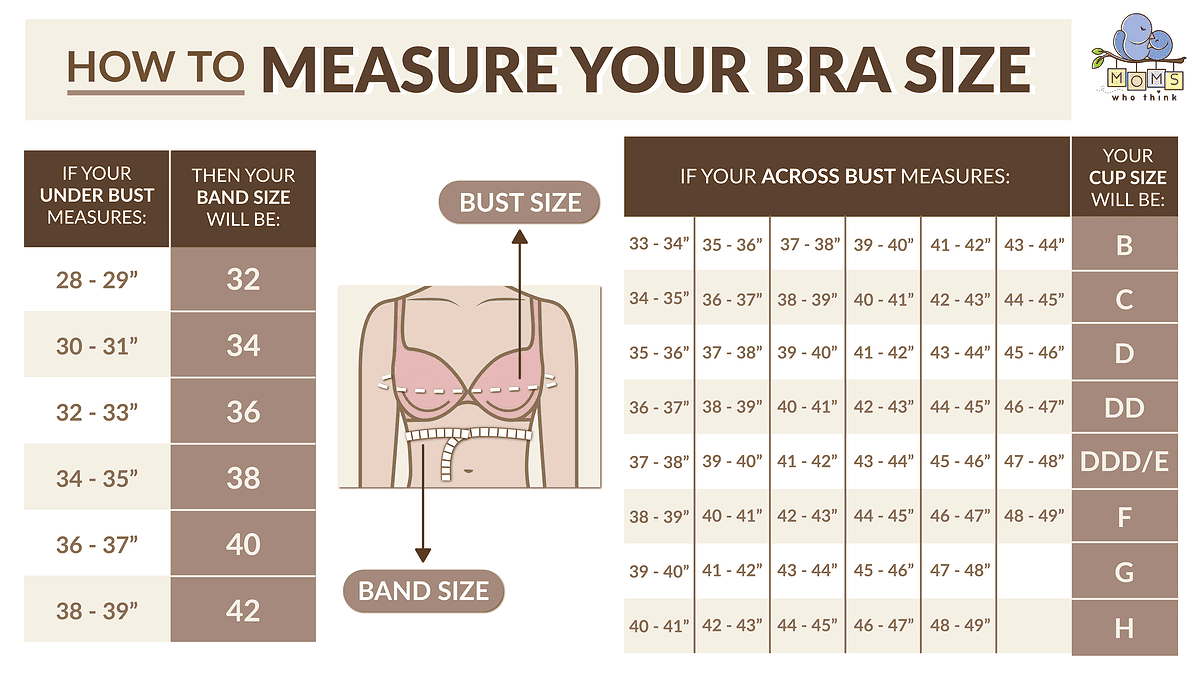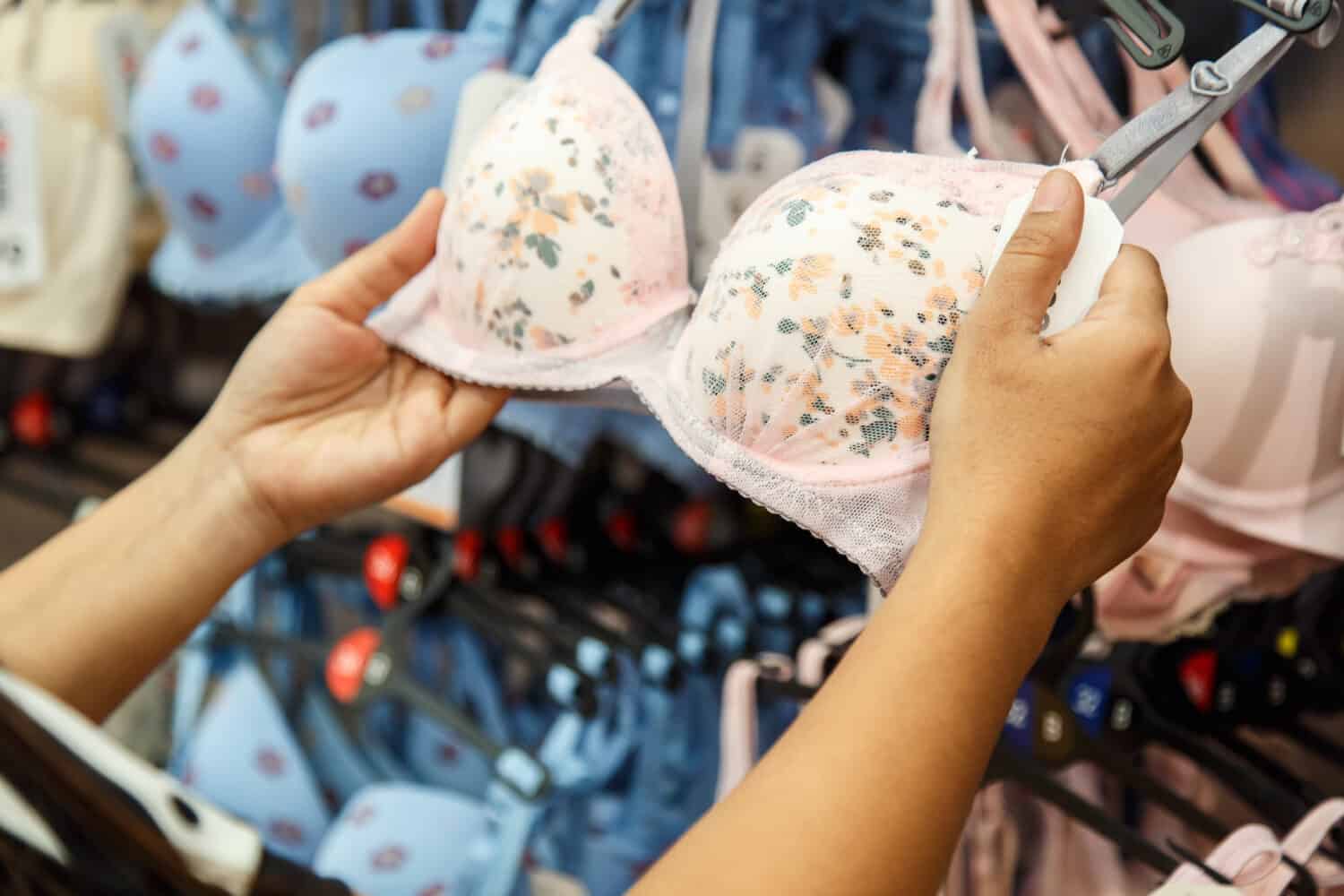Raising a child can be difficult. You have all sorts of important milestones and training steps that you have to get through. You did sleep training as a baby, potty training as a toddler and now you’re at an entirely different stage….bra training!? There will be a lot of changes and a lot of talks that need to happen, as your child begins to enter the stages of puberty.
You will have the puberty talk, the dating talk, and so much more. Don’t worry we’ve got you covered! If your child is entering the stage where you think it may be time for them to begin wearing a bra then this article is for you. In it, we will provide tips on when your child should get a bra, how to pick the perfect bra, how to measure bra size, and more. We will even provide a free chart that shows you how to measure bra size at home. Let’s dive in!
When Will My Child Need a Bra?

On average, girls begin puberty between the ages of 8 and 13.
©photo25th/Shutterstock.com
Most girls will start wearing a bra when they hit puberty. On average, girls begin puberty between the ages of 8 and 13, however, there can always be outliers. So if your daughter begins showing signs of puberty slightly before or after the general age range that is fine as well. The average age for a first bra is 11 years old. More importantly than their age, their bodies will begin showing signs of needing a bra. When your daughter begins to develop breast buds, small bumps under the nipple, that is when they are ready for a bra.
In addition to her body showing that it may be time to look into training bras, there is another sign that shows your daughter might be ready; her expressing interest to you about wearing them. Oftentimes, when girls reach a certain age many of their friends begin wearing bras. Additionally, as girls enter puberty years, many of them become self-conscious about their developing breasts. If any of these situations happen, your child may come to you and express interest in wearing a bra.
Signs That Your Child May Be Ready for Their First Bra
There is no perfect time or age to buy your daughter her first bra. Rather look for signs that she is physically and emotionally ready to embark on this milestone. Here are some signs that your child might be ready for their first bra:
- She is showing discomfort in her chest.
- She is developing breast buds.
- If your daughter is asking about bra shopping.
- If she is beginning to become more self-conscious or embarrassed by her breasts.
The Art of the Training Bra
Usually, when a girl needs her first bra she starts with a training bra. What is a training bra? The name is a little misleading. A training bra is not necessarily training your daughter for anything, rather it is just meant to act as a barrier between your daughter’s developing buds and her clothing. Training bras do not offer support to the breast and do nothing to train the breast, they are simply worn for social and psychological reasons.
Although they may not be considered a “real” bra, they are a great first step for a child who is requesting to wear a bra. When the breasts are just budding, they don’t need a full support or coverage bra. However, if your daughter is developing larger breasts or expresses interest in a traditional bra, that is always an option as well.
How to Pick the Right Bra

Choosing their first bra can be a big step in a young girl's life, be sure to be patient and offer support.
©chalermphon_tiam/Shutterstock.com
Okay, you have had the talk and everyone is on board with getting a bra, now what? How do you ensure that you select the right bra for your daughter? Let’s break it down! Bra sizes are comprised of two different components. You have the band size and the cup size. The band size is measuring the size of the band or piece that wraps around your back. It is the space around your ribcage directly under your breasts. The cup size is measuring for the size of the cups, or places where your actual breast will sit in the bra. It is measured by going across the fullest part of your bust.
Now that you have the components of the actual bra, you should also keep in mind other key factors. The perfect bra for your daughter would offer her:
- Good coverage.
- Quality support that her breasts need.
- Makes her feel comfortable, nothing too tight, too loose, or too bold of a pattern or color choice.
Be sure to keep in mind your child’s emotional needs at this time as well. If she seems embarrassed, don’t pick anything too loud or over the top. If she expresses that she wants just a training bra don’t push for a traditional bra. Or if she needs a bra because she is more developed, don’t feel awkward skipping the training bra stage. It is all about making you and your child as comfortable with the process as can be, both physically and emotionally.
All About Bra Terminology
Buying a bra for the first time can be overwhelming. Especially with all of the technical terminology surrounding bras. Here is a cheat sheet for you and your daughter on all of the bra terminology that may be commonly used when shopping for a bra.
| Bra Term | Definition |
|---|---|
| Compression | A method that holds breasts closer to the body through the use of supportive elastic fabrics. This helps limit the amount of bounce but can create the appearance of having one breast. |
| Encapsulation | In this method, the bounce of breasts is reduced by containing the breasts in molded, semi-rigid cups. The shape of the cups and their placement in the bra helps to limit the movement of the breasts. |
| Underwire/Frame Support System | The underwire is at the bottom of the bra. It is a stiffening component whose purpose is to hold the breast up and contribute overall support to the bra. |
| Straps | The straps go over the shoulders. They act as an additional support system by taking the weight of the breasts and placing them on the shoulders. The larger the breasts, the broader the straps should be. |
| Closure | The closure is the clasp at the back or front of the bra. If the bra is a pullover one, it will not have a closure. Typically larger-sized bras will have this. Be sure to cover the closure to prevent chafing against the skin. |
| Band Size | The band size is measuring the size of the band of the bra. It is the space around your ribcage directly under your breasts. |
| Cup Size | The cup size is measuring for the size of the cups, or places where your actual breast will sit in the bra. It is measured by going across the fullest part of your bust. |
How to Measure Bra Size

There are two components to measuring your bra size, the band size and the cup size.
©otnaydur/Shutterstock.com
When it is finally time to get a bra, you want to make sure you get the right size. How can you determine the right size? Well, there are two methods you can choose from. First, you can go to a store that sells bras and have an associate who works there to get your measurements and assist you in selecting the right size. Alternatively, you can measure yourself at home to determine your size and go pick one up or order a bra online. We will cover both options below.
Go to a Store
If you don’t want the hassle of measuring yourself or if your child would prefer to talk about it with someone other than you, you can always go to a store to get measured. Most clothing and commercial retailers sell bras. Examples of stores that sell bras are Victoria’s Secret, Kohl’s, Soma, T.J. Max, Macy’s, and more. You can go to one of these stores and ask an associate for assistance.
The associate will measure you, in the same way you would at home, and assist you in finding the correct style and fit for your bra. If having this conversation and helping your child find a bra is a bit uncomfortable for you both this may be a good option. However, it may be more embarrassing for some girls to have to discuss their bra and body specifics with a stranger, so keep that in mind when selecting how you want to go about this process.
Measure At Home
If you or your child are more comfortable measuring at home, here is how you determine your bra size from the comfort of your own home. You will need a tape measure to take the measurements. First, you will take the tape measure and wrap it around your rib cage, directly under your breasts. Look at the number on the tape measure where the two ends meet at the front of your rib cage, round to the nearest inch. This measurement determines your band size.
Next, take the tape measure and measure over the fullest part of your bust. Be sure to keep the tape level around your body. Look at the number on the tape measure where the two ends meet at the front of your bust, round to the nearest inch. This is the measurement of your cup size. Now you have successfully measured your bra size.
Now that you have your measurements, what do you do with them? The band size is made up of even numbers. Examples include 32, 34, 36, 38, and so on. Cups are measured in letters. A, B, C, D, DD, and so on. So you take your band size to determine how wide of a band you would need, and you take your bust measurement to determine your cup size. The chart below shows you which measurements correlate with which cup and band sizes.
Free Bra Size Measurement Chart

The average age for a girl to get her first bra is 11 years old.
©
Tips for Trying on Bras
Here are some practical tips for when you are measuring for, and trying on bras to ensure you get your perfect fit. When trying on:
- If the band size comes out as an uneven number, round up to the next band size.
- Example: your band width comes out to 35 inches, so you should select a 36 band size.
- If you feel like you’re in-between sizes or just can’t get it right try going up a band size and down a cup. Or you could try the opposite and go up a cup and down a band size.
- Example: You are a 42D but it's too tight around the band. So you switch to a 44C.
- Example: You are a 38C but the band is a little loose. So you switch to a 36D.
- If your breasts are two different sizes, fit the smaller of the breasts.
Additionally when shopping for bras, if you want to make sure it is the right fit for you, make sure it does the following:
- Feels comfortable
- Feels secure
- Cups completely contain your breasts
- Breasts do not spill out over the sides of cups
- The back of the bra stays in place and does not ride up
- It does not dig into your shoulders
Tips for Talking to Your Child About Bras

Having the first bra talk can be uncomfortable, be gentle and create a judgment-free space where you can discuss it openly.
©Halfpoint/Shutterstock.com
Even though you now have all of the tools to successfully measure your or your child’s bra size, talking about it still may not be easy. Here are some tips on how to best broach the subject with your daughter, and how to continue to communicate with her throughout this new process.
The Tips:
- Encourage her that her body is beautiful and unique.
- Help her understand what is happening to her body and answer any questions she may have.
- Build that body confidence! During this stage, and the rest of puberty girls are subject to social pressures and standards that may diminish their self-confidence. Help her combat that by being kind, and understanding, and reminding her how she and her body are beautiful, even with these new changes.
- Avoid blunt statements like “you need a bra!” Instead, focus on making gentle suggestions and talking about body changes in age-appropriate ways. Instead try, “You know I think I was around your age when I got my first bra, maybe we could look for one for you?”
- Remind her that it is an experience that every woman goes through. This will help her feel like she is supported and not alone.
- Try to make it fun by letting your child pick styles that are age-appropriate but to her taste. If it is something she likes, it will be a less stressful experience.
- Let your child know they can come to you with questions and that it is a judgment-free space. Opening up about puberty and bodily changes can be scary, especially if you fear being ridiculed. By letting your daughter know you are there to support her and not tease her, she will be more willing to open up to you.
There you have it! You are now armed with the knowledge of how to measure bra size and all of the tips and tricks on making it as painless of an experience as possible. Happy shopping!
The image featured at the top of this post is ©SKT Studio/Shutterstock.com
